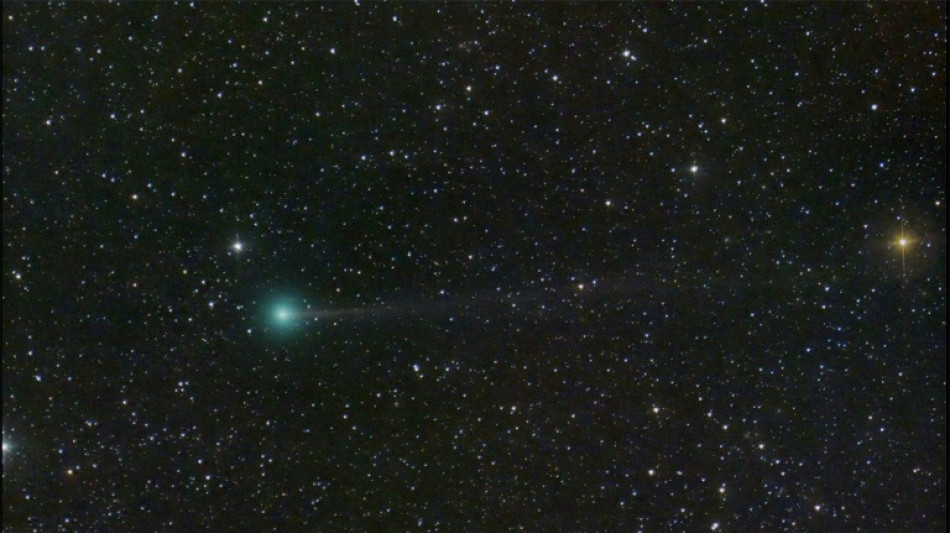
-
 US mulls new restrictions on Chinese drones
US mulls new restrictions on Chinese drones
-
Rosita Missoni of Italy's eponymous fashion house dies age 93

-
 27 sub-Saharan African migrants die off Tunisia in shipwrecks
27 sub-Saharan African migrants die off Tunisia in shipwrecks
-
UK grime star Stormzy banned from driving for nine months

-
 Neil Young dumps Glastonbury alleging 'BBC control'
Neil Young dumps Glastonbury alleging 'BBC control'
-
Swiatek battles back to take Poland into United Cup semis

-
 Electric cars took 89% of Norway market in 2024
Electric cars took 89% of Norway market in 2024
-
Rival South Korea camps face off as president holds out

-
 French downhill ace Sarrazin out of intensive care
French downhill ace Sarrazin out of intensive care
-
Djokovic cruises past Monfils as rising stars impress in Brisbane

-
 Montenegro mourns after gunman kills 12
Montenegro mourns after gunman kills 12
-
Sales surge in 2024 for Chinese EV giant BYD

-
 Agnes Keleti, world's oldest Olympic champion, dies at 103
Agnes Keleti, world's oldest Olympic champion, dies at 103
-
Andreeva, Mpetshi Perricard showcase Australian Open potential

-
 Afghan refugees suffer 'like prisoners' in Pakistan crackdown
Afghan refugees suffer 'like prisoners' in Pakistan crackdown
-
Coach tight-lipped on whether Rohit will play in final Australia Test

-
 Blooming hard: Taiwan's persimmon growers struggle
Blooming hard: Taiwan's persimmon growers struggle
-
South Korea's impeached president resists arrest over martial law bid

-
 Knicks roll to ninth straight NBA win, Ivey hurt in Pistons victory
Knicks roll to ninth straight NBA win, Ivey hurt in Pistons victory
-
'Numb' New Orleans grapples with horror of deadly truck attack

-
 Asia stocks begin year on cautious note
Asia stocks begin year on cautious note
-
FBI probes 'terrorist' links in New Orleans truck-ramming that killed 15

-
 2024 was China's hottest year on record: weather agency
2024 was China's hottest year on record: weather agency
-
Perera smashes 46-ball ton as Sri Lanka pile up 218-5 in 3rd NZ T20

-
 South Korea police raid Muan airport over Jeju Air crash that killed 179
South Korea police raid Muan airport over Jeju Air crash that killed 179
-
South Korea's Yoon resists arrest over martial law bid

-
 Sainz set to step out of comfort zone to defend Dakar Rally title
Sainz set to step out of comfort zone to defend Dakar Rally title
-
New Year's fireworks accidents kill five in Germany

-
 'I'm Still Here': an ode to Brazil resistance
'I'm Still Here': an ode to Brazil resistance
-
New Orleans attack suspect was US-born army veteran

-
 Australia axe Marsh, call-up Webster for fifth India Test
Australia axe Marsh, call-up Webster for fifth India Test
-
Jets quarterback Rodgers ponders NFL future ahead of season finale

-
 Eagles' Barkley likely to sit out season finale, ending rushing record bid
Eagles' Barkley likely to sit out season finale, ending rushing record bid
-
Syria FM hopes first foreign visit to Saudi opens 'new, bright page'

-
 At least 10 dead in Montenegro restaurant shooting: minister
At least 10 dead in Montenegro restaurant shooting: minister
-
Arteta reveals Arsenal hit by virus before vital win at Brentford

-
 Palestinian Authority suspends Al Jazeera broadcasts
Palestinian Authority suspends Al Jazeera broadcasts
-
Arsenal close gap on Liverpool as Jesus stars again

-
 Witnesses describe 'war zone' left in wake of New Orleans attack
Witnesses describe 'war zone' left in wake of New Orleans attack
-
Cosmetic surgery aficionado Jocelyne Wildenstein dies aged 79: partner

-
 Tschofenig takes overall Four Hills lead after second leg win
Tschofenig takes overall Four Hills lead after second leg win
-
10 killed in New Year's truck ramming in New Orleans, dozens hurt

-
 Leeds and Burnley held to draws as Windass hits Wednesday wonder strike
Leeds and Burnley held to draws as Windass hits Wednesday wonder strike
-
New Orleans truck attack: what we know so far

-
 Saudi executes at least 338 people in 2024: AFP tally
Saudi executes at least 338 people in 2024: AFP tally
-
Migrants crossing Channel to UK in 2024 soar by 25 percent

-
 Power restored to most of Puerto Rico: utility
Power restored to most of Puerto Rico: utility
-
Seko Fofana joins Rennes after Saudi Arabia stint

-
 Brazil's Amazon saw highest number of fires in 17 years: agency
Brazil's Amazon saw highest number of fires in 17 years: agency
-
McGregor wants no let-up as Celtic aim to maintain Old Firm grip


Fireworks forecast if comet survives risky Sun flypast
A comet is expected to risk having its tail clipped on Friday by flying perilously close to the Sun, promising fireworks next month should it survive the fraught flypast.
Astronomers believe the Tsuchinshan-ATLAS comet has been hurtling headfirst through the void of space towards the centre of the Solar System for millions of years.
Named for the Chinese observatory and South African programme which detected and confirmed its existence in 2023, the ball of rock and ice may have formed at a distance up to 400,000 times that between Earth and the Sun, models suggest.
Up till now, you had to be in the southern hemisphere to hope to see it with the naked eye.
But on Friday evening it is projected to cross as close to the Sun as it will get, before returning towards Earth.
From October 13 the comet will be visible in the northern hemisphere.
If the weather is right "it will jump to the eye" every night "in the direction of the setting sun", astronomer Lucie Maquet at the Paris Observatory told AFP.
- 'A brilliant comet' -
But that forecast assumes the comet does not fly too close to the Sun.
When comets approach our star, the melting ice contained at their core lets out a long trail of dust which reflects sunlight.
This characteristic tail is also the sign the comet is degassing. If the Sun affects the comet too much, it risks disintegrating.
As the cluster of frozen water and rock "may not resist the force of the Sun's gravity", a catastrophe "is always possible", Maquet said.
The good news is that the comet, officially named "C/2023 A3" by scientists, seems to have a rather massive core.
So "there's a good chance it will survive" its sunny pass-by, the astronomer said.
Initial forecasts predicting the comet would be especially bright as it visited our skies have since been revised down.
"But it will certainly be a brilliant comet," Maquet said.
- Unpredictable future -
The comet's future course is unpredictable.
Its solar sojourn will not be without consequences on its voyage, disturbed by the gravitational pull of the celestial objects it has crossed and by the weightloss inflicted by the Sun's harsh rays.
According to the models of The Paris Observatory's Institute of Celestial Mechanics, it could be "ejected from the solar system and lost among the stars".
All depends on the encounters the comet makes on its journey through the Oort cloud -- a frigid belt of tiny objects theorised to exist at the far end of the Solar System up to 3.2 light-years away -- in a few thousand years' time.
It would be enough, Maquet said, for the comet to pass by an object "that deflects it enough for a return trip to the Solar System".
B.Godinho--PC



